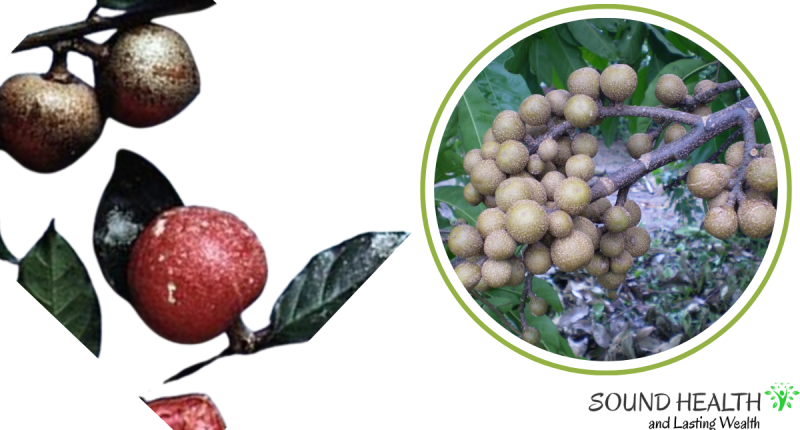Sweet Protein Alternatives: Health Benefits and Natural Ingredients Key to Promoting Consumer Adoption – Europe faces a critical public health challenge: excessive sugar consumption. Averaging 34kg per person annually, citizens are exceeding the World Health Organization’s recommended intake by three times. This alarming trend fuels rising obesity rates and demands innovative solutions. While conventional strategies like sugar taxes and labeling regulations haven’t yielded significant results, a promising solution emerges from the cutting edge of science: sweet proteins.
What are Sweet Proteins?
Sweet proteins are a type of sweetener derived from natural proteins found in fruits. These proteins are extracted and isolated using yeast, resulting in a safe and natural alternative to artificial sweeteners. Unlike artificial sweeteners, sweet proteins are readily digestible, non-allergenic, and devoid of potential health risks.
Crafted through precision fermentation, sweet proteins like thaumatin offer a safe and natural alternative to artificial sweeteners. Derived from fruit proteins expressed and isolated using yeast, these novel sweeteners possess several advantages. They are readily digestible, non-allergenic, and devoid of the potential health risks associated with artificial counterparts. This makes them an ideal option for individuals seeking to reduce sugar intake without compromising their health.
Benefits of Sweet Proteins:
- Reduced sugar intake: Sweet proteins can help individuals reduce their sugar intake significantly without compromising taste.
- Improved health: By reducing sugar intake, sweet proteins can contribute to improved health outcomes, including reduced risk of obesity, diabetes, and heart disease.
- Natural and safe: Sweet proteins are derived from natural sources and are generally considered safe for consumption.
- No aftertaste: Unlike some artificial sweeteners, sweet proteins do not leave an unpleasant aftertaste.
- Wide range of applications: Sweet proteins can be used in various food and beverage products, including yogurt, ice cream, baked goods, and soft drinks.
However, successfully promoting sweet proteins requires strategic marketing. Research indicates that highlighting two key aspects – health benefits and natural ingredients – is crucial for influencing consumer perception and driving adoption.
Recent studies have explored the effectiveness of different message frames in shaping consumer attitudes towards sweet proteins. The findings are encouraging: individuals exposed to messaging emphasizing the health benefits of sweet proteins as a sugar alternative reported significantly higher favorability than those exposed to messaging focusing on their naturalness compared to artificial sweeteners.
This preference for health-focused messaging appears to be influenced by several factors. Individuals with higher BMI levels, acutely aware of the health risks associated with sugar, responded more favorably to health-related message framing. This suggests a potential for targeted marketing strategies to effectively reach populations at risk from excessive sugar consumption.
Furthermore, the study identified an interesting link between anticipatory guilt and message framing. Participants who experienced anticipatory guilt about consuming sugary foods also expressed more positive attitudes towards sweet proteins when exposed to health-related messaging. This finding suggests that tapping into pre-existing concerns about sugar consumption can be a powerful tool for promoting healthier alternatives.
While health-focused messaging proved most effective overall, naturalness messaging did resonate with a specific group: frequent sweetener users. This suggests that highlighting the naturalness of sweet proteins as a way to continue enjoying sweet treats without the drawbacks of artificial sweeteners can be a targeted and effective marketing strategy for capturing the existing low-calorie sweetener market.
The study’s findings offer valuable insights into promoting sweet proteins as a means to reduce sugar consumption and improve public health. However, further research is needed to bridge the gap between positive consumer attitudes and actual behavior. Studies incorporating behavioral data will be crucial to confirm the effectiveness of these marketing strategies in driving real-world changes in sugar consumption patterns.
By harnessing the power of sweet protein alternatives and employing effective marketing strategies that resonate with consumers, we can pave the way for a future where individuals can enjoy sweet treats without compromising their health. This shift holds immense potential for improving public health and addressing the growing challenge of excessive sugar consumption.
List of Sweet Protein Alternatives
1. Thaumatin: Thaumatin is a protein found in the West African katemfe fruit. It is 2,000 times sweeter than sugar and has a licorice-like aftertaste. Thaumatin is used in a variety of food and beverage products, including candy, chewing gum, and yogurt.
2. Brazzein: Brazzein is a protein found in the African herb Pentadiplandra brazzeana. It is 500 times sweeter than sugar and has a clean, sweet taste. Brazzein is used in a variety of food and beverage products, including candy, chewing gum, and soda.
3. Monellin: Monellin is a protein found in the African plant Serendipity berry. It is 3,000 times sweeter than sugar and has a slightly bitter aftertaste. Monellin is used in a variety of food and beverage products, including candy, chewing gum, and ice cream.
4. Miraculin: Miraculin is a protein found in the African fruit Synsepalum dulcificum. It has the unique ability to temporarily alter the taste buds so that sour foods taste sweet. Miraculin is not currently used in any commercial food products, but it has the potential to be used in a variety of applications, such as helping people with diabetes to enjoy sweet foods without consuming sugar.
5. Curculin: Curculin is a protein found in the African plant Curculigo latifolia. It is 200 times sweeter than sugar and has a slightly bitter aftertaste. Curculin is not currently used in any commercial food products, but it has the potential to be used in a variety of applications, such as helping people with diabetes to enjoy sweet foods without consuming sugar.
Factors influencing message framing:
Several factors can influence how individuals respond to different message frames:
- BMI: Individuals with higher BMI levels are more likely to respond favorably to health-focused messaging due to their awareness of the health risks associated with sugar.
- Anticipatory guilt: Individuals who experience anticipatory guilt about consuming sugary foods are also more receptive to health-focused messaging about sweet proteins.
- Previous sweetener use: Frequent users of sweeteners may be more receptive to messaging highlighting the naturalness of sweet proteins.
- Anticipatory pleasure: Individuals who anticipate enjoyment from consuming sweet treats may be more receptive to messaging emphasizing the naturalness of sweet proteins.
Call to action:
Learn more about sweet proteins and how they can help you reduce your sugar intake. Explore products that contain sweet proteins and make the switch to a healthier lifestyle.
Note…
- The World Health Organization’s recommendations on sugar intake
- Information about sweet proteins
- List of products that contain sweet proteins
By working together, we can create a healthier future for ourselves and future generations.
DON’T MISS: How Much Protein After Workout Is Enough – Best Sources?









